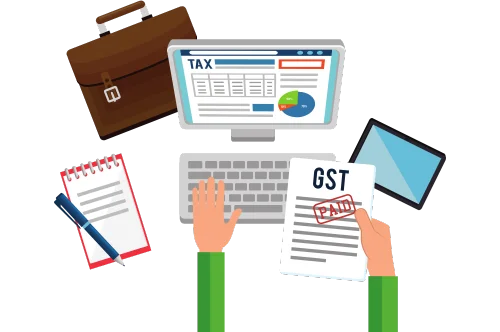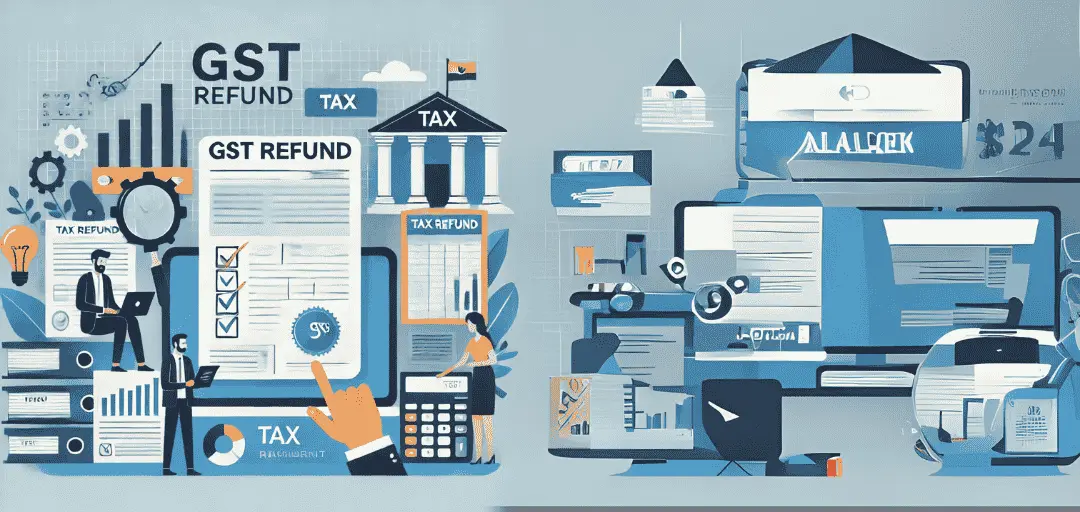GST Refund Process: A Complete Guide
GST Refund Process: A Complete Guide
Goods and Services Tax (GST) is a crucial component of a country’s tax system, ensuring a streamlined taxation process. However, in many instances, businesses and individuals may find themselves eligible for a GST refund. This guide aims to explain the GST refund process, eligibility criteria, required documentation, and essential tips to ensure a hassle-free claim.
Understanding GST Refund
A GST refund is a reimbursement of excess tax paid by a taxpayer. Businesses and individuals can claim a refund under various circumstances, such as excess input tax credit, exports, inverted duty structures, or tax exemptions. Understanding the refund process can help businesses manage cash flow efficiently and ensure compliance with tax regulations.
Eligibility for GST Refund
A refund can be claimed under the following conditions:
- Excess Input Tax Credit (ITC): If the input tax paid is higher than the output tax liability, the taxpayer can claim a refund.
- Exports and Supplies to SEZ Units: Exporters can claim a refund on zero-rated supplies.
- Inverted Duty Structure: If the tax rate on inputs is higher than the tax rate on outputs, businesses can claim a refund.
- Wrong Tax Payments: If a taxpayer mistakenly pays CGST/SGST instead of IGST or vice versa, they can claim a refund.
- Deemed Exports: Supplies notified as deemed exports are eligible for a refund.
- Refund of Taxes Paid by International Tourists: Foreign tourists can claim a refund on goods purchased in the country before departure.
- Refund Due to Provisional Assessment: If a business is assessed at a higher tax rate initially but later reassessed at a lower rate, they can claim a refund for the excess amount paid.
Steps to Claim GST Refund
Filing for a refund requires following a systematic procedure:
Step 1: Filing the Refund Application
The taxpayer must file a refund application (Form GST RFD-01) on the GST portal within two years from the relevant date.
Step 2: Submission of Documents
Essential documents required include:
- GST invoices
- Proof of tax payments
- Bank account details
- Export-related documents (for export refunds)
- Any other supporting documents as required
Step 3: Acknowledgment by Tax Authorities
Once the application is submitted, an acknowledgment is issued within 15 days. If any discrepancies arise, tax officials may request additional information.
Step 4: Processing and Verification
Tax authorities verify the claim, scrutinizing invoices, bank details, and other documents. If everything is in order, the refund is processed.
Step 5: Refund Approval and Payment
Upon approval, the refund amount is credited directly to the taxpayer’s bank account within 60 days. If there is a delay beyond this period, interest is payable on the refund amount.
Common Challenges in GST Refund Processing
While claiming a refund, businesses often encounter the following challenges:
- Documentation Errors: Incorrect or incomplete invoices and missing documents can delay the process.
- Mismatch in ITC Claims: Any inconsistency between ITC claims and GST returns can lead to rejection.
- Prolonged Verification Process: If tax authorities require additional verification, refunds may take longer than expected.
- Technical Glitches on GST Portal: Sometimes, system errors can delay the submission and processing of refund applications.
Tips for a Hassle-Free GST Refund Process
To ensure a smooth refund process, follow these best practices:
- Maintain Proper Documentation: Keep all invoices, tax payment proofs, and other necessary documents in order.
- File Refunds Timely: Avoid last-minute submissions to prevent unnecessary delays.
- Ensure Accuracy in GST Returns: Reconcile input tax credits and output liabilities to avoid mismatches.
- Seek Professional Assistance: If required, consult tax experts to ensure compliance with GST regulations.
- Regularly Check GST Portal: Keep track of refund status and respond promptly to queries from tax authorities.
Conclusion
A GST refund is an essential process for businesses and individuals who have paid excess tax. Understanding the eligibility criteria, required documents, and step-by-step procedure can make the process efficient and hassle-free. By staying compliant with GST regulations and maintaining accurate records, businesses can ensure timely refunds and smooth financial management. If you encounter challenges, seeking professional advice can help you navigate the process effectively.
Filing a refund may seem complicated at first, but with the right approach and careful documentation, it becomes a manageable task. Keep track of your tax credits, follow the guidelines diligently, and make the most of your eligible refund to optimize your business’s financial health.
Our GST Services

All E-commerce Tax services
E-commerce tax services help online sellers navigate GST registration, compliance, return filing, TCS management, tax planning, and audits, ensuring efficient tax management and legal compliance.

GST Filing
GST filing is the process of submitting tax returns to the government, detailing sales, purchases, and taxes paid or collected, ensuring compliance with GST laws.

GST Registration
GST registration is the process where businesses obtain a GSTIN from the government, allowing them to collect taxes, claim input tax credits, and comply with GST laws.





